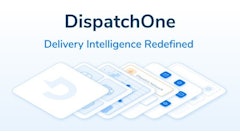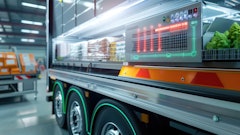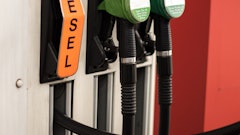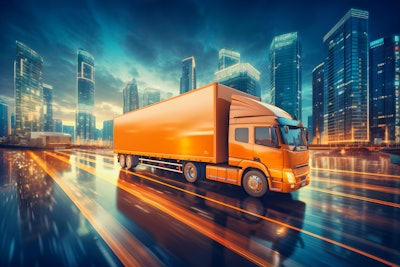
Sustainability is no longer just a buzzword; it’s a crucial part of how modern businesses operate. As eco-consciousness rises, consumers are increasingly scrutinizing the environmental impact of their everyday activities. In fact, over 6-in-10 consumers reported high levels of concern about sustainability according to Bain & Company, with most stating their worries have intensified over the past two years due to extreme weather.
One area under scrutiny is the last-mile delivery process, where delivery trucks ply the streets, emitting carbon dioxide (CO2) emissions and contributing to traffic congestion. The environmental footprint of last-mile logistics is influenced by various factors, including the type of vehicles used for deliveries, the degree to which these vehicles are filled to capacity, the number of stops required to serve all customers, and the rate of product returns.
As a result, consumers are questioning the sustainability of their deliveries, prompting businesses to urgently address these concerns in their supply chain operations. With the advancement of technology, particularly artificial intelligence (AI), businesses now have a powerful tool at their disposal to make their delivery operations greener, smarter and more efficient.
Load Optimization
A key way AI can help make deliveries more sustainable is by optimizing truck loads. Load optimization helps make the most of the space available in a vehicle to transport as many items as possible in a single trip. Often, delivery trucks are not fully utilized, leading to inefficient use of fuel and increased emissions per package delivered.
AI algorithms can analyze various factors like package size, weight, delivery locations and real-time demand patterns to optimize the loading of trucks. It also accounts for safety by ensuring the truck’s center of gravity remains balanced and won’t exceed its maximum capacity. By ensuring that trucks are safely filled to capacity, AI can significantly reduce the number of vehicles on the road, thus having a positive impact on conservation.
Route Optimization
AI can also play a crucial role in optimizing delivery routes. Failure to choose the best route, especially in a journey involving multiple deliveries, may result in unnecessary mileage being added to the trip, thus negating any gains from load optimization. Traditional route planning methods may not account for real-time traffic conditions, weather or other variables that impact the efficiency of deliveries.
AI-powered route optimization algorithms can continuously analyze data from various sources, including GPS sensors, traffic cameras and historical traffic patterns, to dynamically adjust delivery routes in real-time. By identifying the most efficient routes, AI can help businesses reduce fuel usage and emissions while improving driver productivity and ensuring timely delivery to customers.
Predictive Analytics
Another way AI can contribute to greener last-mile delivery is through predictive analytics. By analyzing historical data and consumer behavior patterns, AI algorithms can predict future demand more accurately. This enables businesses to proactively plan their delivery schedules and optimize resource allocation, reducing the need for multiple trips to the same neighborhood and minimizing unnecessary extra emissions and energy consumption.
Predictive analytics can also be leveraged to help predict shipping outcomes. Through examining patterns like loss frequencies, delivery attempts and returns, AI can predict the success rate of deliveries to specific addresses. This information can be used to proactively ensure safe package delivery and allow for tailored shipping strategies if the risk seems high. For example, if an address has historically had issues with porch piracy, the package can be routed to an alternate pick-up location or require a signature to have a greater chance at a successful delivery. This doesn’t just lead to increased customer satisfaction and savings for the business but also helps ensure a greener footprint by eliminating the need for multiple deliveries to the same address in the event of a delivery mishap.
Furthermore, AI can facilitate dynamic scheduling of deliveries based on changing demand patterns and real-time conditions. By dynamically adjusting delivery schedules and dispatching vehicles accordingly, businesses can respond more efficiently to customer needs while minimizing idle time and reducing overall fuel consumption.
Enhanced Customer Experience
Beyond the environmental benefits, implementing AI-driven solutions in last-mile delivery can also lead to an enhanced customer experience. By optimizing routes and schedules, businesses can offer more accurate delivery windows and reduce the likelihood of delays or missed deliveries. This not only improves customer satisfaction but also reduces the need for re-deliveries, further minimizing environmental impact.
AI is Driving Sustainability
The logistics and transport sector contributes just over a third of global CO2 emissions, making it the largest-emitting sector in numerous developed countries. As consumer expectations for sustainability continue to rise, businesses must adapt their supply chain and logistics operations to meet these demands. AI presents a powerful solution for making last-mile delivery greener and more efficient.
By leveraging AI algorithms to optimize truck loads, plan routes, utilize predictive analytics and drive dynamic scheduling, businesses can significantly reduce their environmental footprint while meeting the needs of eco-conscious consumers. Embracing AI-driven solutions is not only a step towards a more sustainable future but also a strategic imperative for businesses looking to stay competitive in a rapidly evolving market.
![Pros To Know 2026 [color]](https://img.sdcexec.com/mindful/acbm/workspaces/default/uploads/2025/08/prostoknow-2026-color.mduFvhpgMk.png?auto=format%2Ccompress&bg=fff&fill-color=fff&fit=fill&h=100&q=70&w=100)





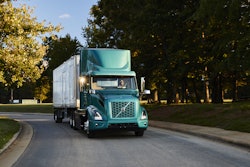


![Pros To Know 2026 [color]](https://img.sdcexec.com/mindful/acbm/workspaces/default/uploads/2025/08/prostoknow-2026-color.mduFvhpgMk.png?ar=16%3A9&auto=format%2Ccompress&bg=fff&fill-color=fff&fit=fill&h=135&q=70&w=240)
